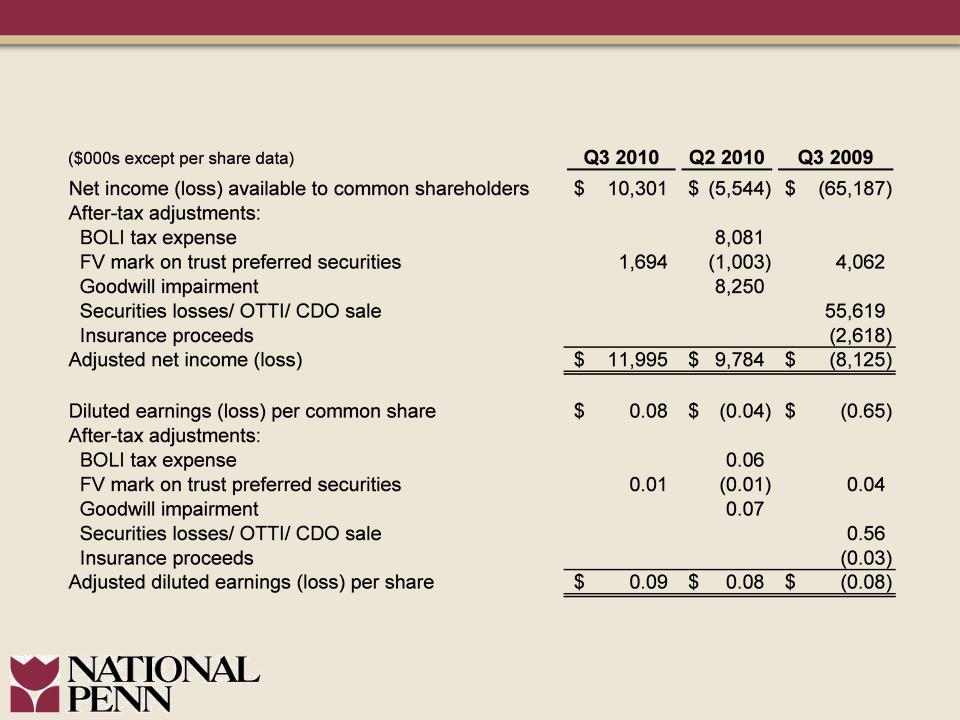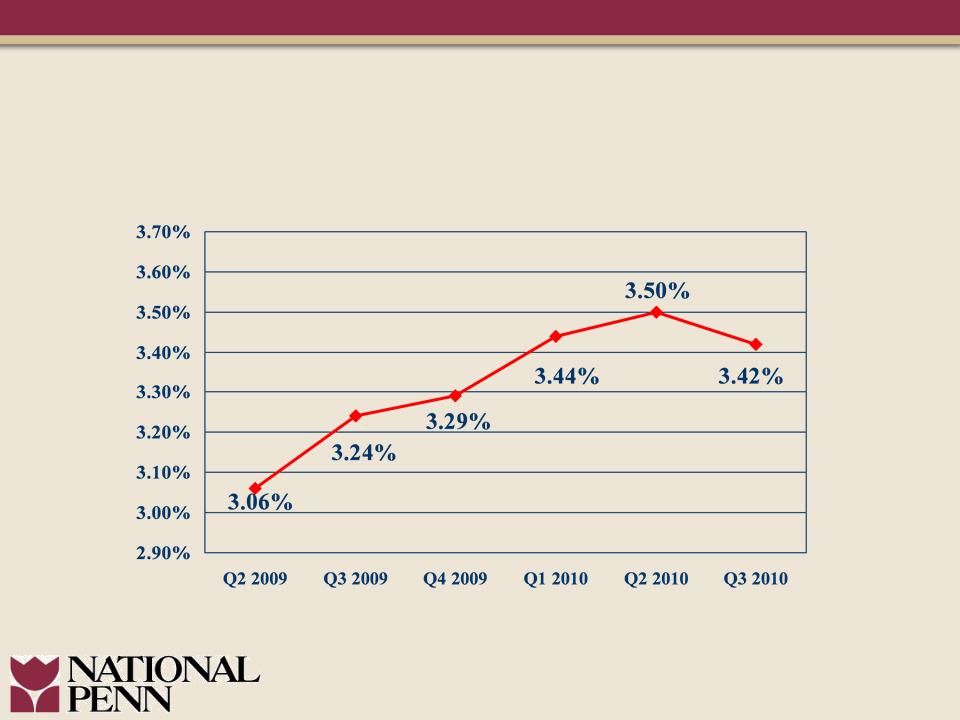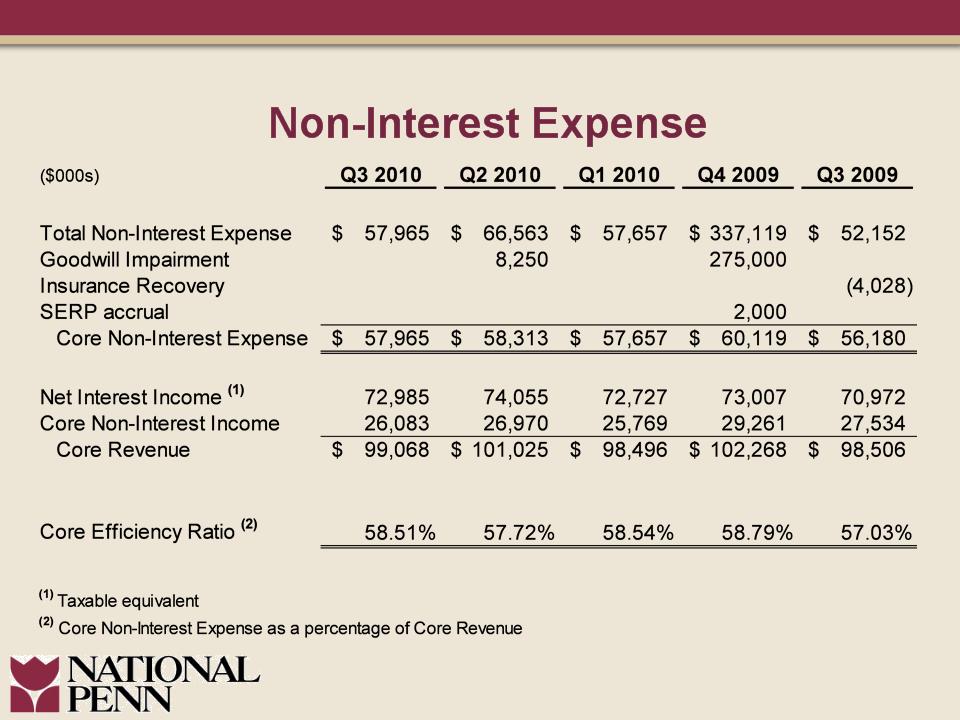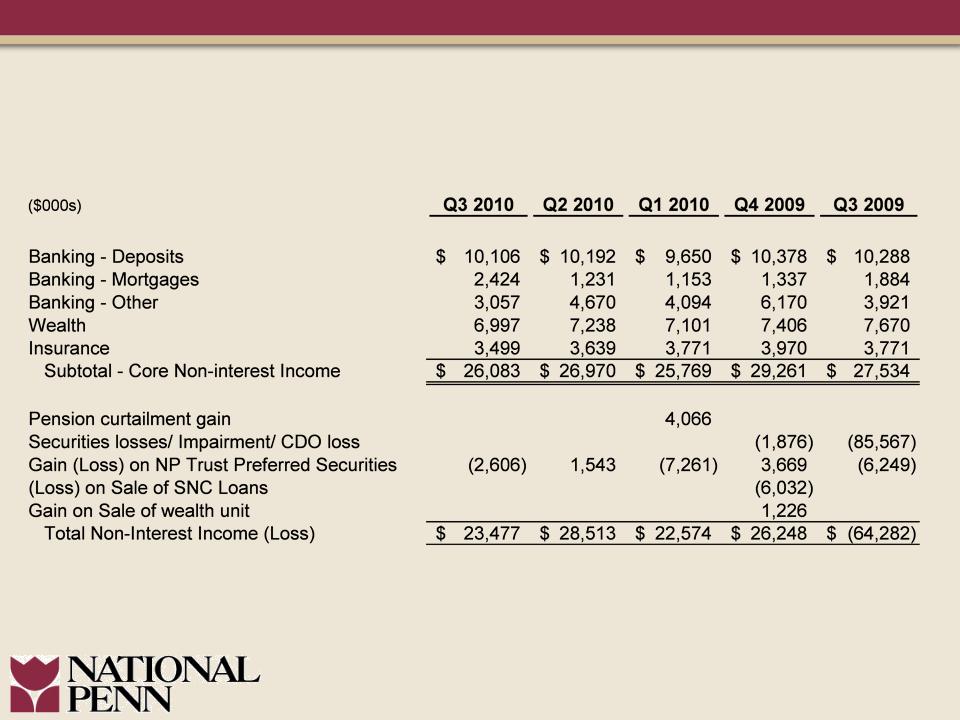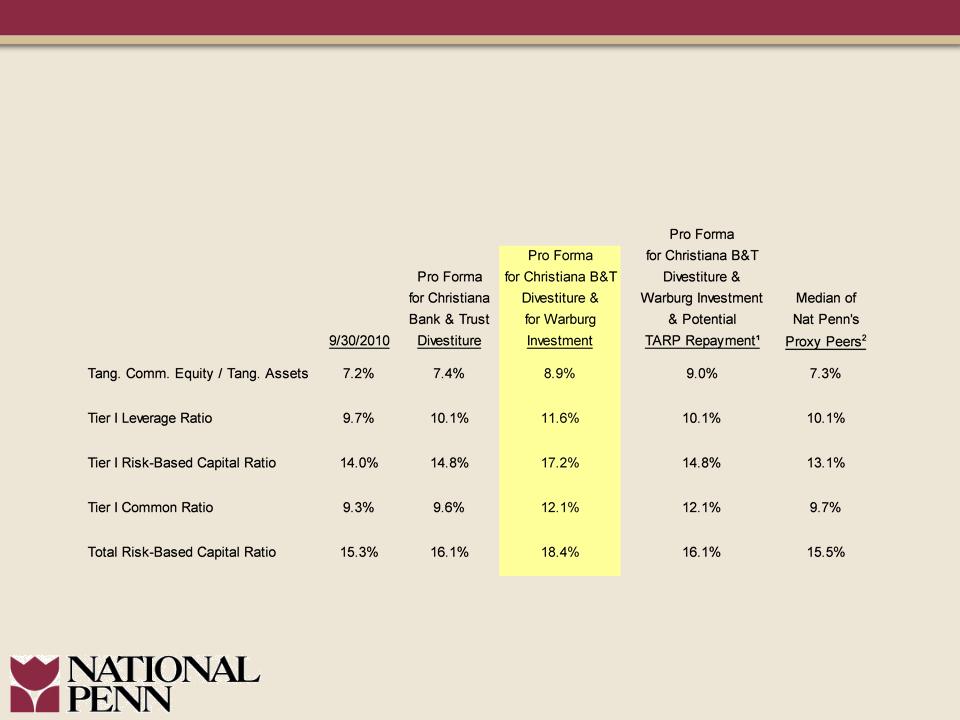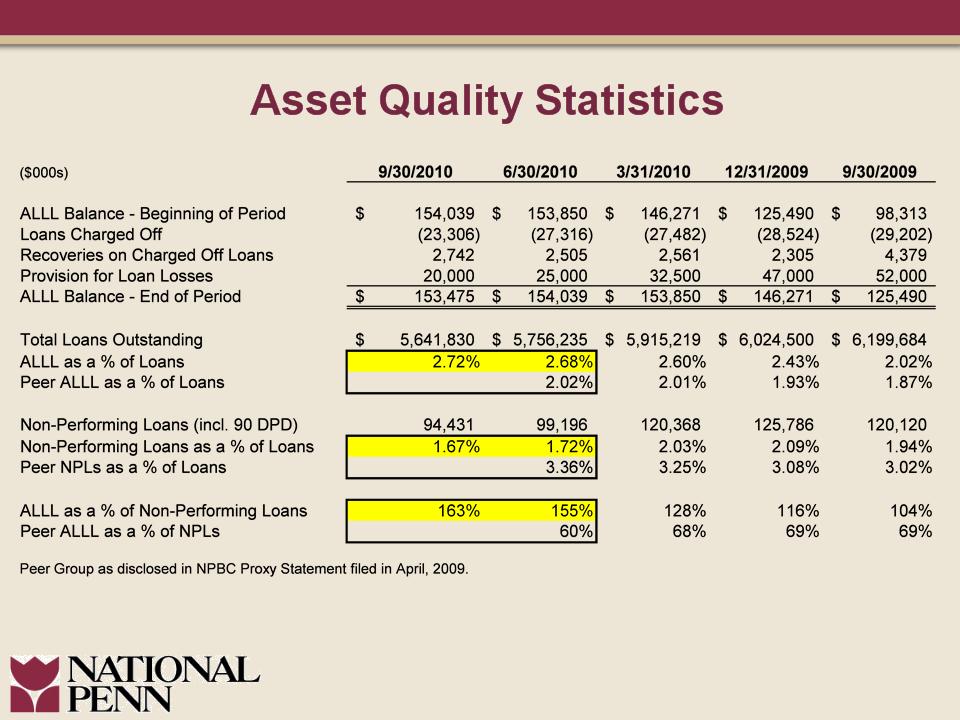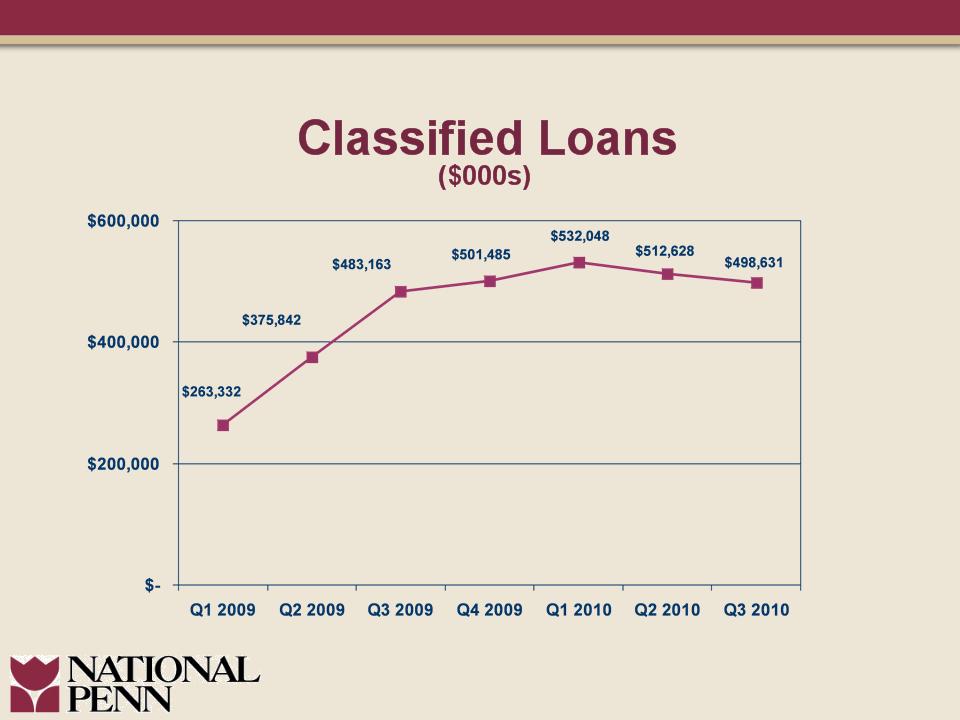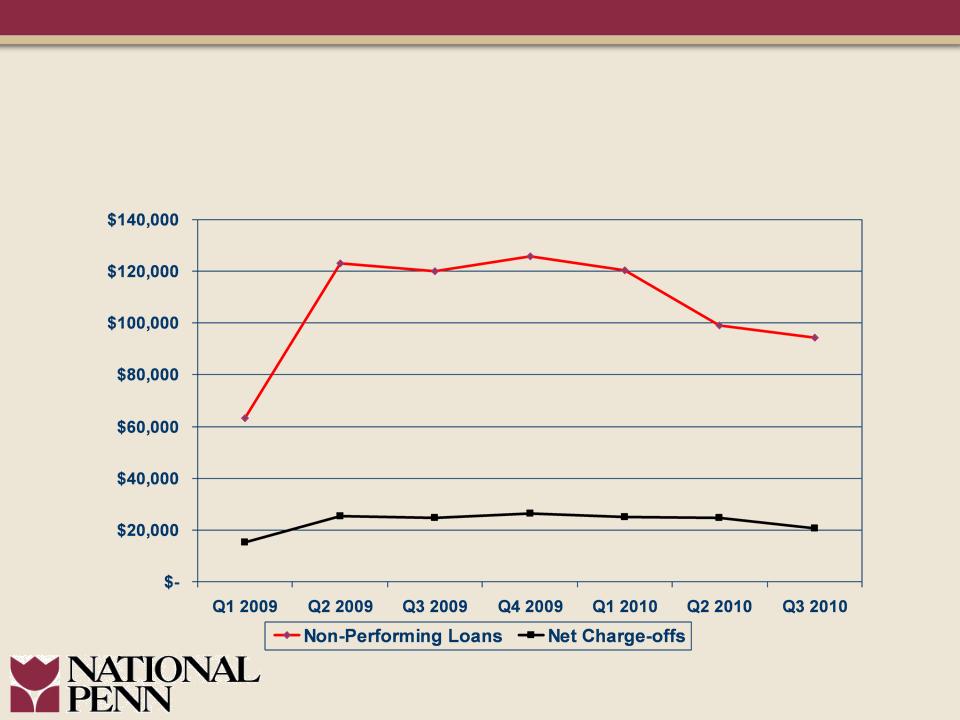2
This release, including the attached Financial Highlights and financial data tables, contains supplemental financial information determined by
methods other than in accordance with Accounting Principles Generally Accepted in the United States of America (“GAAP”). National Penn’s management uses these non-
GAAP measures in its analysis of National Penn’s performance. These measures should not be considered a substitute for GAAP basis measures nor should they be viewed as
a substitute for operating results determined in accordance with GAAP. Management believes the presentation of the following non-GAAP financial measures, which exclude the
impact of the specified items, provides useful supplemental information that is essential to a proper understanding of the financial results of National Penn.
– Annualized return on average tangible common equity excludes the average balance of acquisition-related goodwill and intangible assets and the average balance
of preferred equity in determining average tangible shareholders’ equity. Annualized return on average tangible equity provides a method to assess management’s
success in utilizing the company’s tangible common capital.
– Tangible book value excludes from total equity goodwill, intangible assets and preferred stock. Banking and financial institution regulators also exclude goodwill
and intangible assets from shareholders’ equity when assessing the capital adequacy of a financial institution. Tangible book value provides a method to assess
the level of tangible net assets on a per share basis.
– Adjusted net income excludes the effects of certain after-tax gains and losses. Adjusted net income provides a method to assess earnings performance by
excluding items that management believes are not comparative among the periods presented.
– Efficiency ratio expresses operating expenses as a percentage of fully-taxable equivalent net interest income plus non-interest income. Operating expenses
exclude items from non-interest expense that management believes are not comparable among the periods presented. Non-interest income is adjusted to also
exclude items that management believes are not comparable among the periods presented. Efficiency ratio is used as a method for management to assess its
operating expense level and to compare to financial institutions of varying sizes.
Management believes the use of non-GAAP measures will help readers compare National Penn’s current results to those of prior periods as
presented in the accompanying Financial Highlights and financial data tables.
Non-GAAP Financial Measures
Safe Harbor Regarding Forward Looking Statements
This release contains forward-looking information about National Penn Bancshares, Inc. that is intended to be covered by the safe harbor for
forward-looking statements provided by the Private Securities Litigation Reform Act of 1995. Forward-looking statements are statements that are not historical facts.
These statements can be identified by the use of forward-looking terminology such as “believe,” “expect,” “may,” “will,” “should,’’ “project,” ”could,” “plan,’’ “goal,”
“potential,” “pro forma,” “seek,” “intend,’’ or “anticipate’’ or the negative thereof or comparable terminology, and include discussions of strategy, financial projections,
guidance and estimates (including their underlying assumptions), statements regarding plans, objectives, expectations or consequences of announced transactions,
and statements about the future performance, operations, products and services of National Penn and its subsidiaries. National Penn cautions readers not to place
undue reliance on these statements.
National Penn’s business and operations, as well as its business and operations following the completion of transactions described in this release,
are subject to a variety of risks, uncertainties and other factors. Consequently, actual results and experience may materially differ from those contained in any
forward-looking statements. Such risks, uncertainties and other factors that could cause actual results and experience to differ from those projected include, but are
not limited to, the following: increased capital requirements and other requirements or actions mandated by National Penn’s regulators, National Penn’s inability to
meet the requirements of the memorandum of understanding or the individual minimum capital ratio requirements issued by its primary regulator, National Penn’s
inability to successfully implement its “self-improvement plan”, National Penn’s ability to raise capital and maintain capital levels, variations in interest rates,
deterioration in the credit quality of loans, the effect of credit risk exposure, declines in the value of National Penn’s assets and the effect of any resulting impairment
charges, recent and ongoing changes to the state and federal regulatory schemes under which National Penn and other financial services companies operate
(including the recently passed Dodd-Frank Act and regulations to be adopted to implement that Act), competition from other financial institutions, interruptions or
breaches of National Penn’s security systems, and the development and maintenance of National Penn’s information technology. These risks and others are
described in greater detail in National Penn’s Annual Report on Form 10-K for the fiscal year ended December 31, 2009, as well as in National Penn’s Quarterly
Reports on Form 10-Q and other documents filed by National Penn with the SEC after the date thereof. National Penn makes no commitment to revise or update any
forward-looking statements in order to reflect events or circumstances occurring or existing after the date any forward-looking statement is made.



